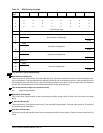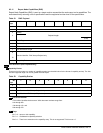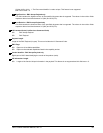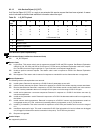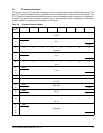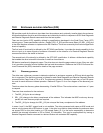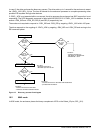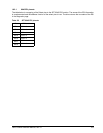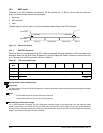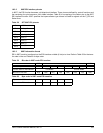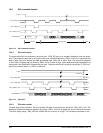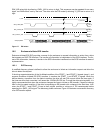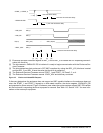
Fibre Channel Interface Manual, Rev. D 101
10.0 Enclosure services interface (ESI)
ESI provides a path for the drive to input data from the enclosure and, optionally, transfer data to the enclosure.
All transfers between the drive and its enclosure are initiated by the drive in response to SCSI Send Diagnostic
and Receive Diagnostic Results commands from the host system.
There are two levels of ESI capability defined by specifications developed in the Small Form Factor (SFF)
industry group. These specifications use the –Parallel_ESI (–P_ESI) and the seven Select_ID (SEL_(6:0)) pins
in the drive interface connector to implement the ESI interface. The drives covered by this manual support both
levels of capability.
The first level of functionality is defined by the SFF 8045 specification. It provides the simple capability for the
drive to input up to seven signals of enclosure information at the direction of a Receive Diagnostic Results
command and return the status to the host.
The second level of functionality is defined by the SFF 8067 specification. It defines a bidirectional capability
that enables the drive to transfer information to and from its enclosure.
ESI data is transferred in diagnostic pages. The drive does not check the page contents to see if they are valid.
It only provides a transfer function between the host and the enclosure. Reference the SCSI-3 Enclosure Ser-
vices Command Set (SES) standard for details of the page contents.
10.1 Discovery process
The drive uses a discovery process to determine whether its enclosure supports an ESI and which specifica-
tion is supported. The discovery process is initiated for each Send Diagnostic and Receive Diagnostic Results
command with a Page Code of 01h to 0Fh. The discovery process is initiated for each retry on an ESI opera-
tion and for each enclosure initiated operation. Reference Figure 13 for a flow diagram of the discovery pro-
cess.
The drive enters the discovery phase be asserting –Parallel ESI low. The enclosure has a maximum of 1
µ
sec
to respond.
There are three reactions for the enclosure:
1. The SEL_(6:0) pins do not change.
2. SEL_(3:0) change to the binary complement of the address. This indicates that 8067 mode may be sup-
ported, but more discovery steps are required.
3. The SEL_(6:0) pins change, but SEL_(3:0) do not equal the binary complement of the address.
In cases 1 and 3, the 8067 support level is not available. The drive processes both cases as 8045 mode and
returns only the seven bits of ESI status. In case 1, the drive is not able to detect whether the enclosure does
not support ESI for this drive location or if ESI equals Select_ID. It is the host’s responsibility to determine
whether the returned information is ESI or Select_ID information. This may be accomplished by issuing a
Receive Diagnostic Results command to a device location with redundant ESI capability.



